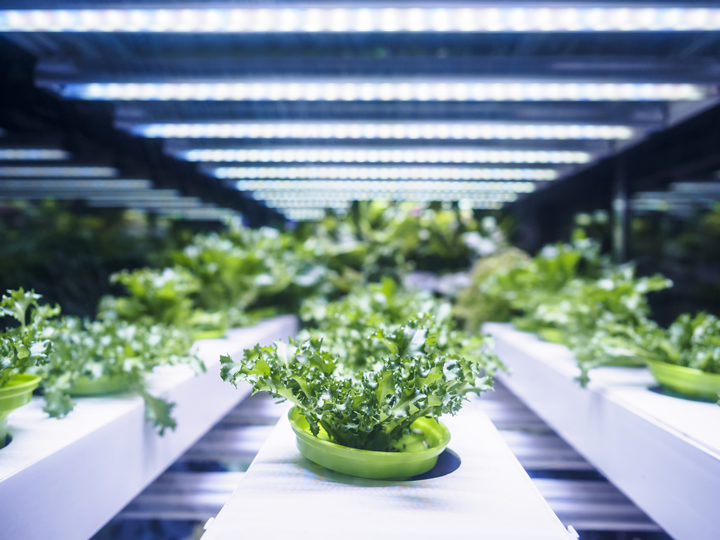Renewably powered aeroponic farms can significantly reduce the environmental impact of fresh produce compared to imports, new study finds.
Aeroponic container farms are a new method of farming that use a soilless technique to grow crops in a controlled environment. This method involves suspending the plant roots in a nutrient-rich mist, which helps to optimise crop growth and reduce water usage.
Rehabilitation via vertical farming trialled for the first time in UK prisons
For the first time in the UK, vertical farming will be trialled in a prison setting as part of a strategy to aid rehabilitation by empowering prisoners and helping them develop new skills to reintegrate back into society.
Key Differences Between Aeroponics & Hydroponics
If you're wondering what the differences are between Aeroponics vs. Hydroponics, you're probably not alone. These often misunderstood agricultural practices are set up to be the future of farming, but most people don't know much about them.
AeroFarms Breaks Ground on World's Largest and Most Technologically Advanced Aeroponic Indoor Vertical Farm
Next-generation Model 5 farm to advance leadership in plant science and technology, drive continuous innovation and expand leafy greens business in Mid-Atlantic region.
Readers Choice 2020: Space to Grow, or Grow in Space - How Vertical Farms Could Be Ready to Take-off
Vertical farms with their soil-free, computer-controlled environments may sound like sci-fi, but there is a growing environmental and economic case for them, according to new research laying out radical ways of putting food on our plates.
Taking aeroponics back to its roots: The history of aeroponics and why it matters.
The aeroponic origin story is deeply rooted in space and science fiction. In space, crews must utilise all resources to their fullest potential, reducing, reusing and recycling everything they take with them.
How Science Helps an Indoor Farm
While there are many different techniques with indoor farming, including hydroponics, aeroponics, and aquaponics, all of them have one thing in common - the lack of soil. Instead of using the concept of growing in soil, crops are instead grown in peat moss or coconut husks.
#1 Article for 2018 - Growing with Hydroponics, Aeroponics and Aquaponics
Because hydroponics, aeroponics and aquaponics do not use soil, they can be established indoors in locations that have cold, severe climates. These growing methods can also be used in localities that have poor, sandy soil.
Records 1 to 8 of 8
Featured Product

The ERT150 - Dorner's Next Evolution of Edge Roller Technology Conveyors
The next evolution in Dorner's Edge Roller Technology conveyor platform, the ERT®150, is ideal for small and light-load assembly automation, as well as medical and medical-device assembly application. The ERT platform is the only pallet conveyor of its kind available with an ISO Standard Class 4 rating for cleanroom applications. Earning the ISO Standard 14644-1 Class 4 rating means Dorner's ERT150 will conform and not contribute to the contamination of cleanrooms to those standards. As implied by its name, the ERT150 (Edge Roller Technology) uses rollers to move pallets through the conveyor smoothly with no friction (a byproduct often seen in belt-driven platforms). The conveyor's open design eliminates concerns of small parts or screws dropping into rollers and causing conveyor damage or jamming. The ERT150 is suited to operate in cleanroom environments requiring a pallet handling conveyor. It is capable of zoning for no or low-back pressure accumulation and is ideal for automation assembly applications within industries including medical devices, electronics, consumer goods among others.






.jpg)


